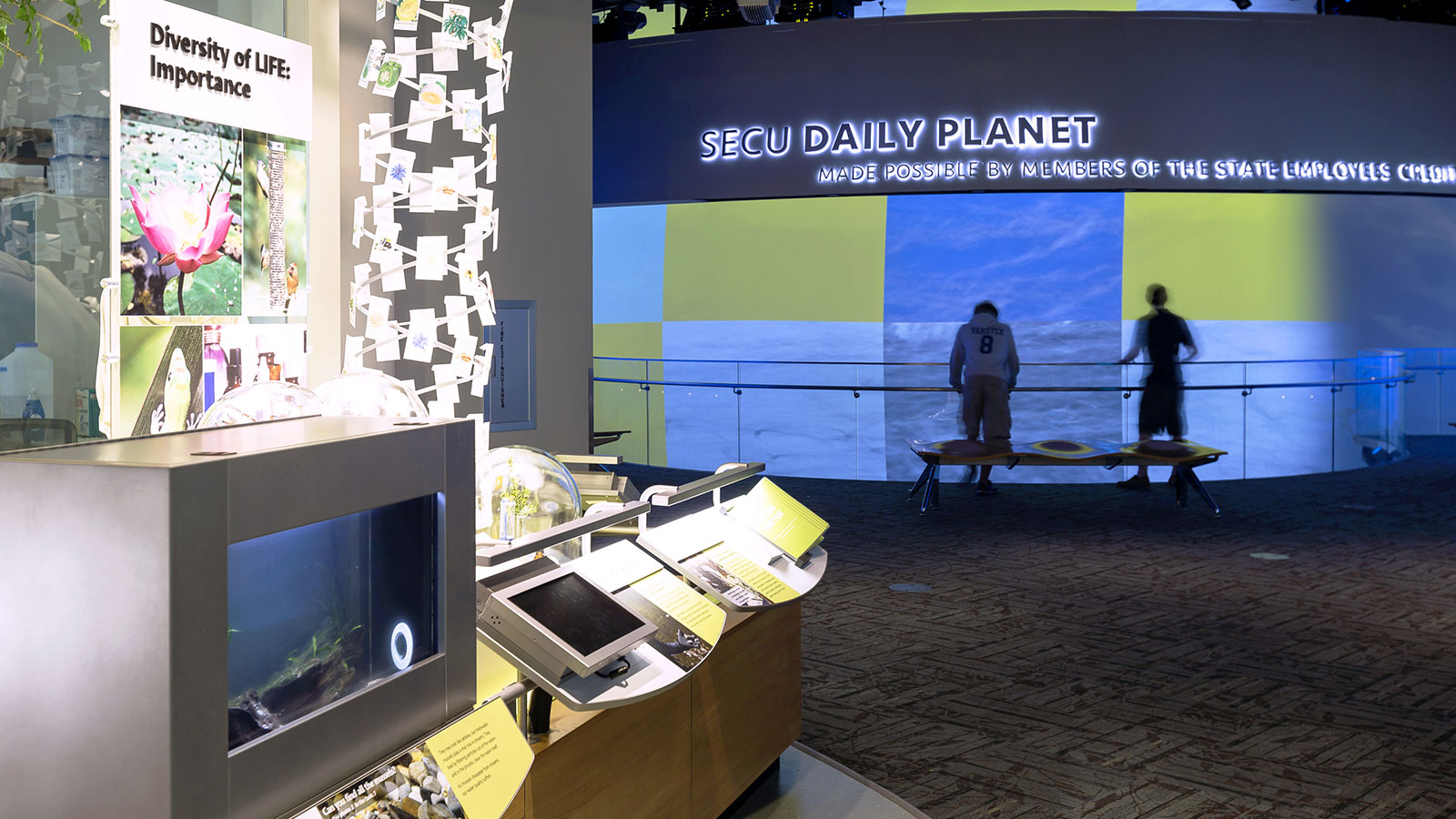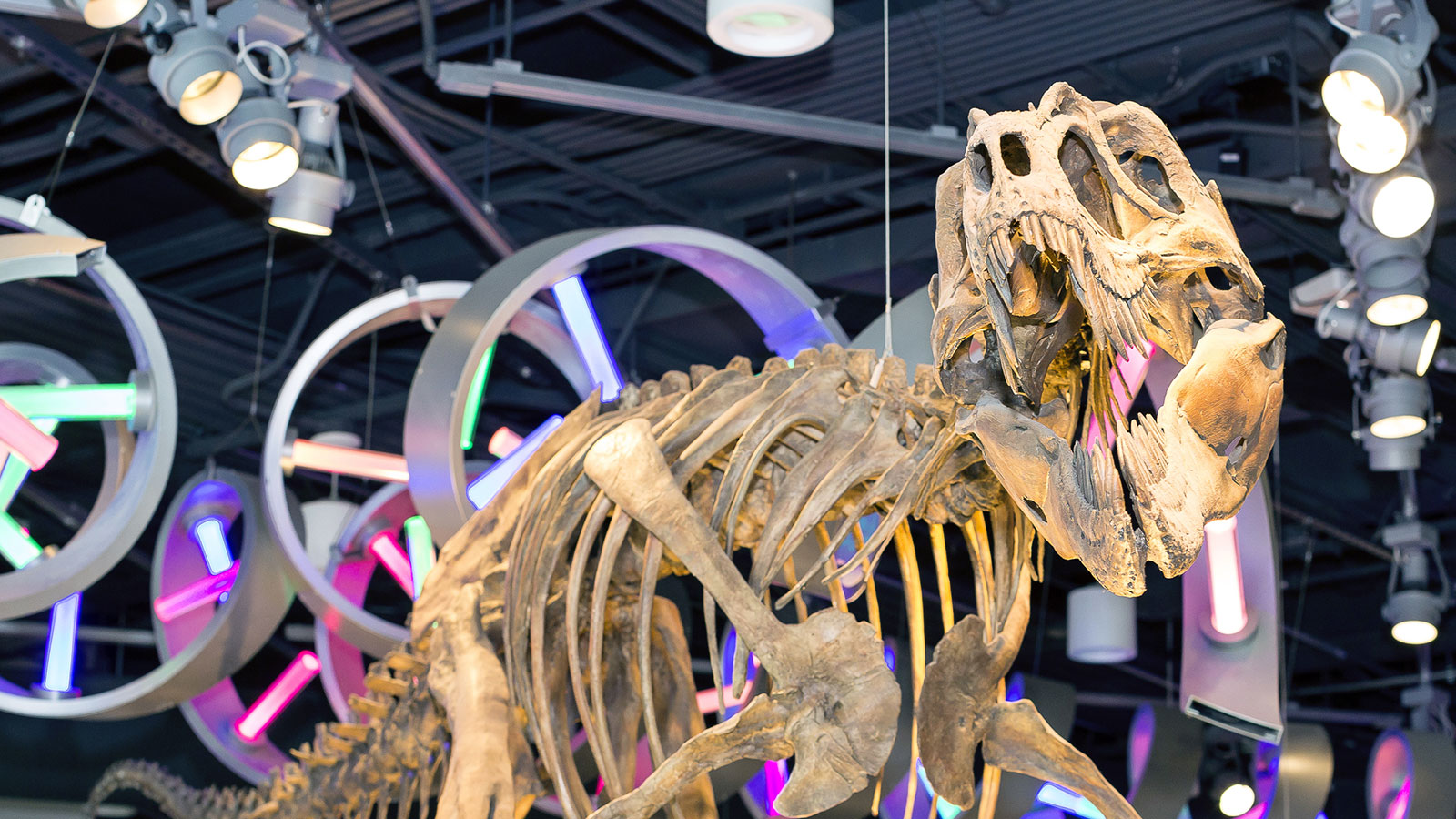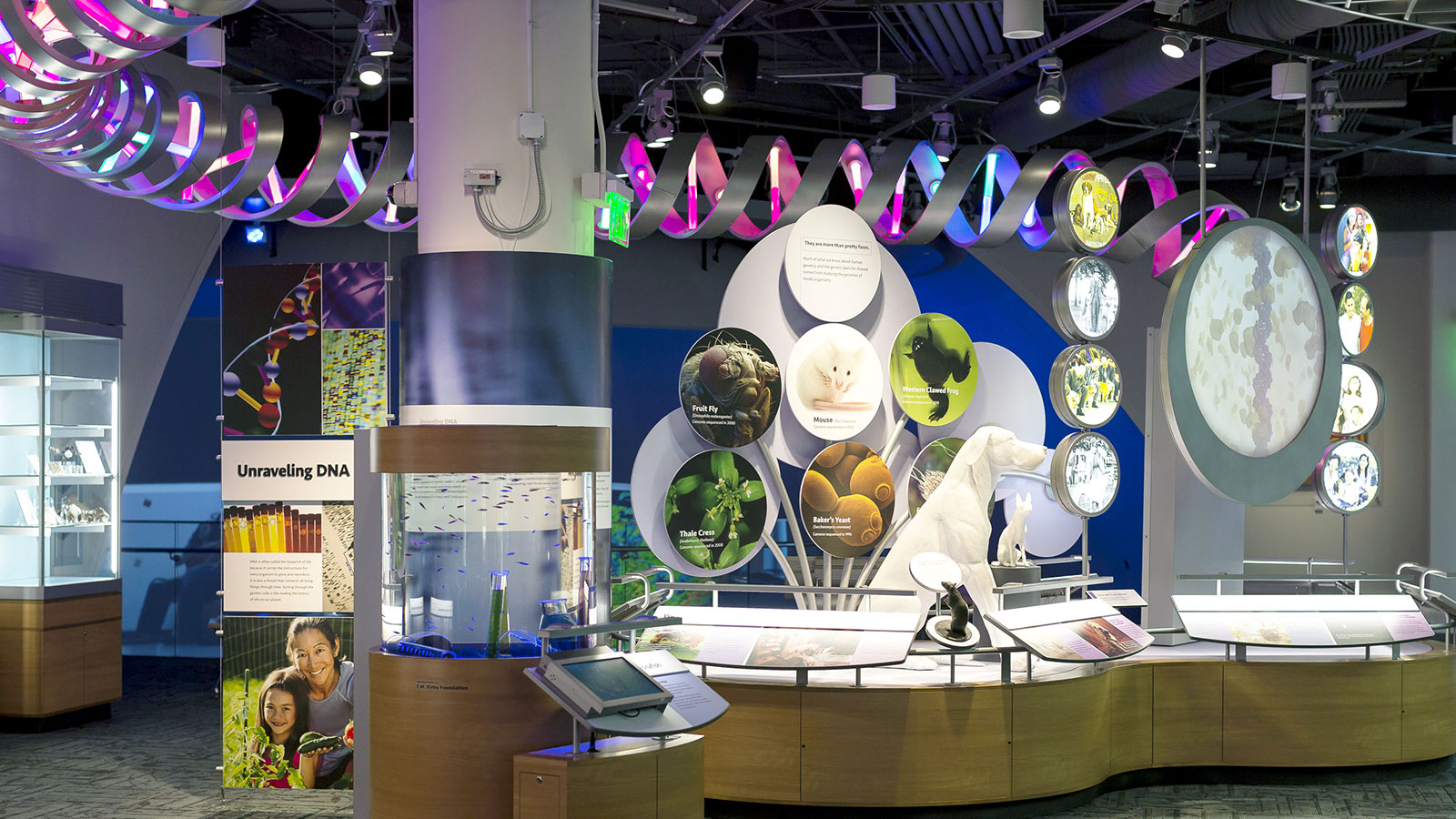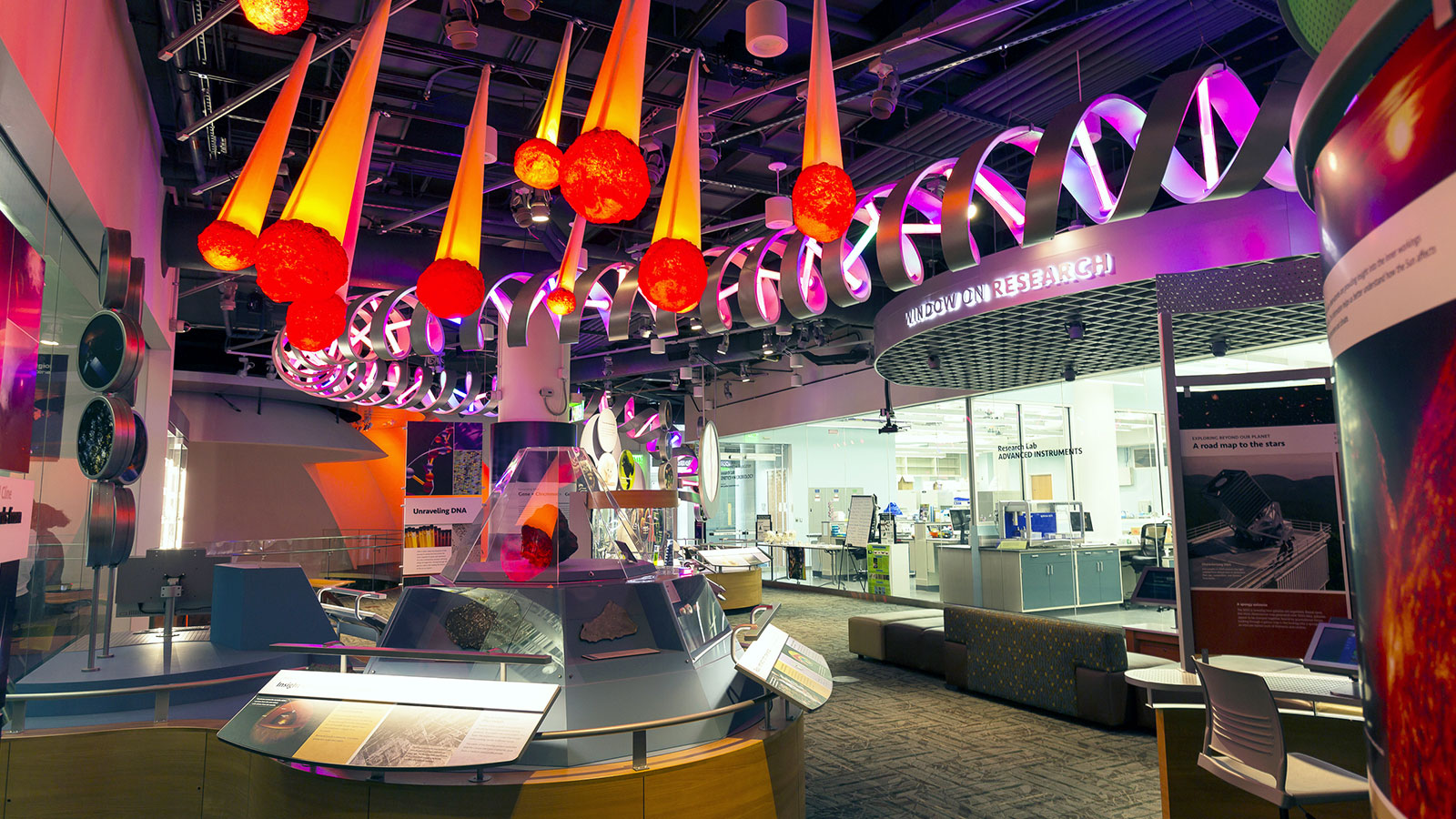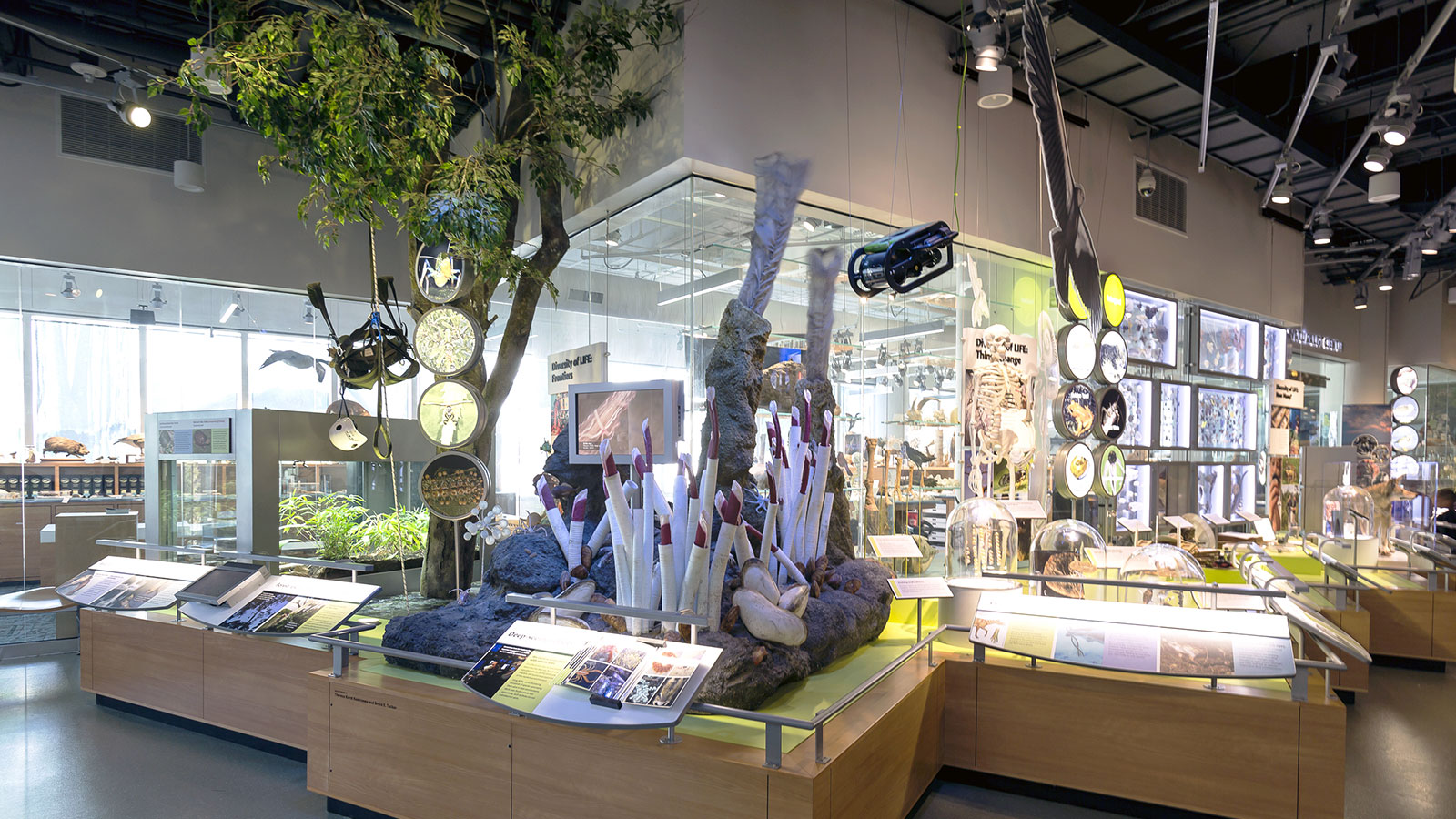Nature Research Center
Raleigh, North Carolina
Project Size: 33,000 square feet
Designers: Andrew Merriell & Associates
Experiencing Science
This project added 80,000 square feet to the North Carolina Museum of Natural Science exploring topics that include space exploration, astronomy, the ice age, ocean exploration, biodiversity and green initiatives and serves to improve understanding of and engagement with science. The three-story wing is LEED certified and employs only LED lighting to achieve energy efficiency. The NRC has a stated goal of “bringing research scientists and their work into the public eye, help de-mystify what can be an intimidating field of study, better prepare science educators and students and inspire a new generation of scientists.” Complex digital media is integrated throughout that invites a hands-on experience where visitors can question, observe and analyze. It’s a place where the public can participate in real lab experiments, or learn through sophisticated interactive displays.
Engineering Solutions
kubik maltbie’s contributions to this ambitious project included fabrication, detailing, installation, management, and collaboration with other third-party service providers. Exhibits integrated traditional models and dioramas, live animal enclosures and complex digital engagements requiring close collaborating with animal care specialists, AV specialists, lighting designers, and model builders.
Throughout the process, kubik maltbie protected the design integrity while taking a very proactive approach to budget management. At the “Deep Sea Explorer” exhibit a twelve-seat theater fashioned as a model of a submersible integrates lighting and acoustics that mimic the experience of traveling to the ocean floor and includes an 8-foot diameter acrylic dome, projections, a countdown clock, exit and emergency lighting, and a ventilation system. Along with the fabrication and installation of this complex exhibit, kubik maltbie designed a way to lower the module to make it ADA-compliant eliminating the need for an expensive wheelchair lift. A visual highlight of the museum is a 120-foot long sculptural DNA strand with color-changing LEDs. kubik maltbie engineered this piece so that every half-rung changes color to represent a single enzyme in that strand. Visitors use a touch-screen interface to change the colors of the strand to represent specific species – from humans to mosquitoes. Between visitors and during events, an automatic mode illuminates the strand in random-changing patterns. Creating the structural backbone for this piece required engineering a ball-and-socket system that enabled clear, hollow acrylic tubes that pivot to achieve the wide range of required angles. In addition to providing valuable insights to the project, the scope of work included; pre-construction services, built shop drawings, fabrication of exhibitry, casework, project coordination, artifact mounting, dioramas, graphics, lighting, interactives, shipping and installation on-site.

